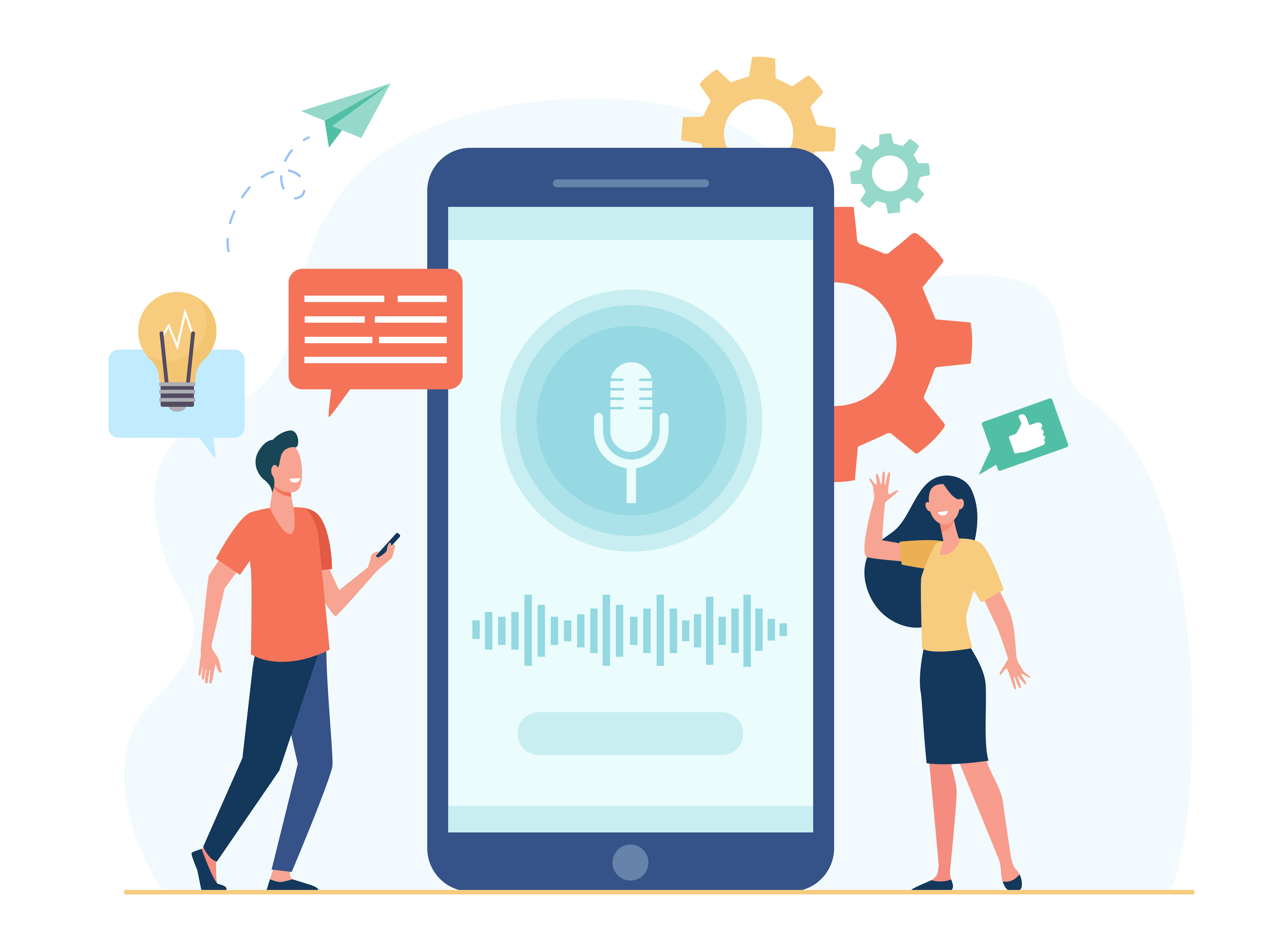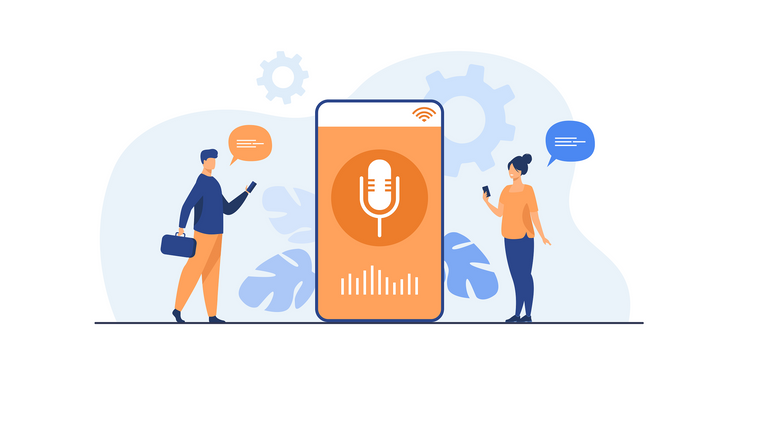Top 10 Speech to Text Software in 2024

"Words have power," they say. And now, with the remarkable advancements in speech to text, those words hold even greater significance. Imagine effortlessly converting spoken language into written text with just a few clicks or simple voice commands. It's no longer a far-fetched dream but a tangible reality that has reshaped our relationship with technology.
From capturing the essence of interviews to unleashing the creativity of writers to empowering individuals with hearing impairments, speech to text software has become an indispensable tool in our digital toolbox. This rapidly evolving technology has a plethora of options, making it essential to have an understanding of the market leaders.
This article has you covered. We have curated a list of the best speech to text software based on key features, unique selling propositions, advantages, and limitations to help you make an informed choice that fits your specific needs perfectly.
Table of Contents
Top 10 Speech to Text Software of 2024
Here are the best speech to text apps shaping how we convert voice into text.
Otter.ai
Otter.ai, an innovative AI-powered speech to text software, is known for its precise transcription services. It uses ambient voice intelligence (AVI), a unique feature that enhances the tool's learning capabilities, improving accuracy as it is used more.
Key features
Live transcription: Changes voice to text instantly, aids work.
Voice sharing: Enables voiceprint exchange for easy collaboration.
Talk recording: Stores conversations, useful for reference and documents.
However, users should be mindful of a few limitations. Otter.ai has a monthly cap on transcription time and may delay the final text from an audio recording. Despite this, its robust features make it an exceptional choice for accurate speech to text conversions.
IBM Watson Speech to Text
IBM Watson speech to text, a cloud-native solution on this list, is a unique AI-powered tool with impressive capabilities. It provides real-time transcription alongside an option for batch conversion of audio files, catering to various languages, audio frequencies, and output preferences.
Key features
Speaker Diarization: Differentiates speakers, currently in beta.
Watson Assistant Integration: Watson can be integrated with the Watson Assistant to process natural language questions directly.
Security and Deployment: Ensures data security, flexible deployment on cloud or on-premises
Compared to competitors, IBM Watson's cost may be a deterrent for some. The beta multi-speaker recognition feature's inconsistency could be a concern for users.
Despite its pricing and a few ongoing tweaks, IBM Watson speech to text is the best speech to text software that emphasizes accuracy, flexibility, and a user-friendly interface, making it an outstanding choice for businesses and individuals alike.
Amazon Transcribe
A standout in the speech to text software landscape, Amazon Transcribe is a cloud-based solution developed for app integration. It delivers remarkably accurate transcriptions, even from low-quality audio sources, a key advantage for environments like contact centers.
Key features
Vocabulary editing: Ensures consistent product names, simplifying transcript analysis.
Audio for apps: Facilitates direct integration into custom apps.
Speaker and channel recognition: Differentiates multiple speakers and annotates transcripts accordingly.
However, adding industry-specific vocabulary can be cumbersome, and transcriptions may need careful proofreading for accuracy. Regardless of these, Amazon Transcribe's unique features and applications make it an influential player in the AI speech to text landscape.
Microsoft Azure Speech to Text
Microsoft Azure speech to text, part of the Azure cloud service, emerged as an advanced speech recognition platform in 2024. It utilizes deep neural network models to deliver real-time audio transcription and handle multiple speakers.
Key features
Domain-specific recognition: Identifies field-specific terms.
Proper noun adaptation: Adjusts to speech patterns, noises, and specialized vocab.
Microsoft integration: Works smoothly with all Microsoft products, improving convenience.
Azure's complicated setup may challenge users, requiring technical expertise to manage. Ultimately, Microsoft Azure speech to text represents cutting-edge voice recognition platforms, offering an unparalleled service for those seeking a powerful and adaptable speech to text solution.
Nuance Dragon
Dragon Speech Recognition Solutions, owned by Nuance, is an advanced dictation application with powerful AI-based speech recognition capabilities. It offers two powerful products: Dragon Professional and Dragon Anywhere. Each designed to cater to different needs stands out in the dictation tools. Dragon Professional, intended for professional use, presents robust dictation and document management capabilities.
Key features
High-speed dictation: Can take dictation at a typing speed of 160 words per minute with a 99% accuracy rate.
Custom word list import: Enhances recognition accuracy by incorporating commonly used words.
Audio file transcription: Transcribes audio files sent from a mobile app, facilitating document management.
However, users might find the user interface a tad outdated, and its recording transcription could be better.
On the other hand, Dragon Anywhere is a fully functional Android and iOS mobile application. It provides a powerful dictation feature powered by cloud technology, syncing with the desktop Dragon software.
Both Dragon tools, despite some limitations, offer high-quality speech recognition and excellent accuracy, making them valuable assets in the speech to text environment.
Braina Pro
Renowned for its exceptional dictation capabilities, Braina Pro is more than just a speech to text software. The software shines for its AI-based voice recognition, enabling dictation in over 90 languages with an impressive 99% accuracy.
Key features
Adaptive AI: Software learns from each interaction, enhancing speech understanding.
Multilingual: Unlike competitors, Braina supports nearly 90 languages.
Versatile Assistant: Braina Pro does various tasks, like setting alarms or web searching, not just dictation
Braina Pro is widely appreciated for its high accuracy and flexible capabilities despite the dated interface and subscription-only model. The software is compatible with Windows, iOS, and Android, and has a companion Android app for remote PC control, further enhancing user convenience.
Verbit
A unique blend of AI and human expertise is what sets Verbit apart from other speech to text software. Specifically designed for enterprise and educational establishments, Verbit uses AI to enhance transcription and captioning.
Key features
Smart AI: Verbit uses speech models and neural networks to reduce noise, identify accents, and deliver accurate transcriptions.
Enterprise focus: Verbit enables collaboration, providing reliable service for businesses and schools.
Fast, Precise Service: High accuracy and speedy results, perfect for situations needing precision
Verbit may not offer real-time availability or customizable pricing, but their use of AI and human intervention guarantees precise transcriptions. It offers extensive video captioning tools and features real-time status updates, ensuring users can monitor their transcription process conveniently. Given its focus on accuracy and team use, it certainly earns its spot as one of the best speech to text software.
Speechmatics
Speechmatics is a powerful AI-driven speech to text tool that relies on machine learning to convert spoken words into text. It stands out with its automatic speech recognition solution, applicable to both existing audio/video files and live use.
Key features
Accent Support: Speechmatics supports major English accents, versatile for global users.
Media Captioning: Provides captions for videos, useful for multimedia tasks.
Keyword Triggers: Lets users manage specific transcription keywords, adding extra utility
While the lack of a free version might be a setback, the speech recognition software still shines due to its robust AI performance. It offers one of the most accurate transcriptions in the industry, making it a strong contender for one of the top AI speech to text software.
Gboard
Gboard, a popular keyboard app by Google, is a leading choice for Android users seeking reliable speech to text capabilities. With its hands-free voice typing and swipe functionality, Gboard transforms the typing experience on mobile devices.
Key features
Voice Typing: Gboard enables hands-free text dictation, great for fast messages or notes.
Emoji and GIFs: Integrated emoji and GIF search for interactive chatting.
Multilingual: Supports over 60 languages, reflecting Google's inclusive tech approach.
Gesture Control: Unique typing experience with gesture-based cursor control
Apart from some drawbacks, such as the lack of shortcut commands and occasional lag in recording audio, Gboard is still lauded for its easy-to-use design and various features. Especially noteworthy is the fact that it is free via voice control, making it accessible to a broad range of users. While it may not fully understand slang or colloquialisms, its overall efficiency as the best dictation software is undeniable.
Apple Dictation
Apple Dictation, a powerful tool with Apple's operating systems, shines as a free and convenient speech to text software for Apple devices. Known for its seamless integration and dependable accuracy, Apple Dictation is supported by the technology behind Siri, Apple's voice-controlled assistant.
Key features
Keyboard Dictation: Transforms voice to text in any typing application, boosting productivity.
Audio Sharing: Users can share audio recordings, increasing versatility.
Multi-Language: Though mainly U.S. English-focused, it supports other languages, serving a broad user base.
Although the software is not ideally suited for longer dictations, it excels in transcribing short notes and controlling functions using voice commands. The dictation software remains a powerful tool integrated into Apple's ecosystem, providing an efficient and free solution to transcribe text on Mac devices by activating voice control.
Tips for Choosing the Right Speech to Text Software
If you're a student, content creator, or executive needing speech to text software, picking the right one is key. Here are some tips for your decision:
Accuracy
Accuracy is paramount when it comes to speech to text software. Look for software that boasts high accuracy rates in transcribing speech to text. User reviews and testimonials can provide valuable insights into the accuracy of different software options.
Language and Dialect Support
The software should support a wide range of languages and dialects. It's essential for users who may need to transcribe content in multiple languages or work with a multilingual team.
Customization Options
Users should look for software that allows for the personalization of voice commands and the creation of custom vocabularies. This feature can enhance efficiency and user experience, particularly for users who frequently use industry-specific terminology.
Integration Capabilities
The software should seamlessly integrate with other applications and platforms users already use. This facilitates a smooth workflow and improves productivity.
Pricing Plans
Pricing plans play a vital role in the selection process. The software should offer competitive pricing without compromising on features and functionality.
User Reviews and Testimonials
Users should explore reviews and testimonials from others to gain insights into user satisfaction and the software's performance in real-world scenarios.
Free Trials or Demos
Users should take advantage of free trials or demos to test the software. This can help users assess if the software fits their needs before purchasing.

Conclusion
In the grand symphony of progress, speech to text software has emerged as a brilliant maestro, harmonizing the spoken word with the written, elevating the melody of communication. Each tool, unique in its composition, caters to diverse rhythms and needs. However, remember, the perfect software is the one that orchestrates your voice most harmoniously.
FAQs
What is speech to text?
Speech to text is a technology that converts voice commands into written words, commonly used for transcription, voice assistants, and accessibility.
What are the benefits of using speech to text software?
Speech to text software enhances productivity, provides accessibility for individuals with hearing impairments, aids in transcribing meetings or interviews, and facilitates the hands-free operation of devices.
Can speech to text software accurately transcribe accents and dialects?
Yes, advanced speech to text software can transcribe accents and dialects with varying degrees of accuracy, improving with machine learning and diverse training data.
Can I use speech to text software on my mobile device?
Yes, many speech to text software options are available on mobile devices, such as Google's Gboard, Windows speech recognition software, and various standalone apps like Otter.ai.



